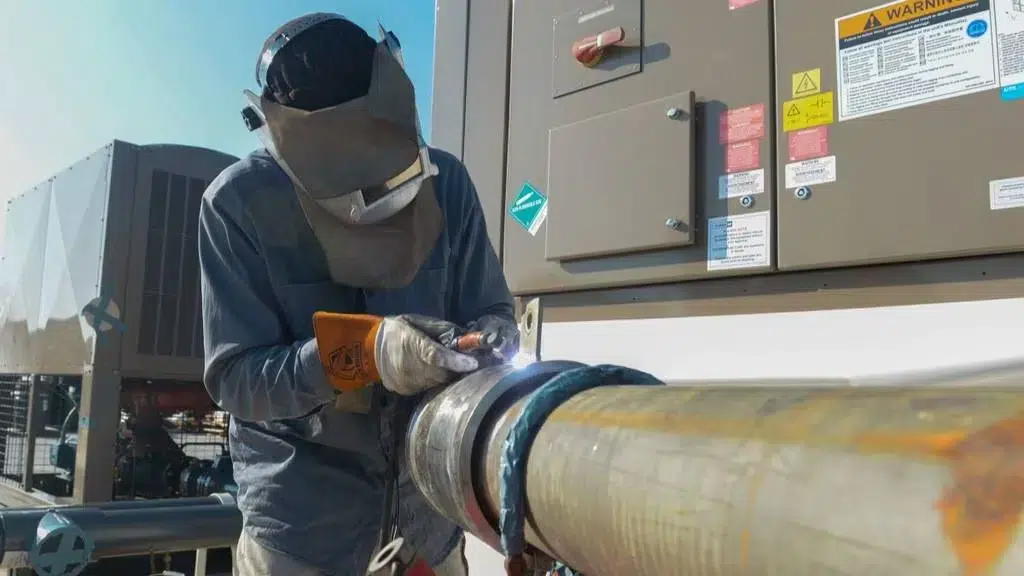This article by Irene Loewenson was originally published by Marine Corps Times.
WASHINGTON — The general in charge of the Marine Corps has a message to Marines eyeing jobs in the civilian world: Consider shipyards.
About 20,000 Marines to 30,000 Marines leave the service each year, pursuing school, business and, often, the trades, Assistant Commandant Gen. Christopher Mahoney said Thursday at the US Naval Institute’s Defense Forum Washington 2023 at the International Spy Museum in the nation’s capital.
“We need a national plan to incentivize our youth to work in the shipbuilding industry, focus those trades on the shipbuilding industry,” Mahoney said.
A major theme of Mahoney’s speech was the need for more resources to flow to the domestic shipbuilding industry in order to set the US naval forces up for success in competition with China, which has the edge over the United States in terms of shipbuilding capacity. A dearth of workers is the biggest challenge for the US shipbuilding industry, naval advocates say.
China has the largest navy in the world by sheer number of vessels, with more than 370 ships and submarines, according to a Pentagon report released in October. The US Navy, in contrast, has less than 300 ships, though the service’s then-leader said in April the target should be 373 ships.
Marine Corps leaders want the Navy to have a minimum of 31 amphibious ships to transport the rapid-response-focused Marine expeditionary units around the globe, but the Pentagon plans to let the fleet shrink below that number in 2024.
Mahoney said later on in his speech Thursday, “I’m ready today to start working with industry partners or whoever is interested to increase pathways for Marines seeking, once they exit, to go into the trades and serve another way in the shipyards.”
What that would look like remains a little unclear.
When Marine Corps Times asked Mahoney how pathways to shipyards for Marine veterans would work, his spokesman, Maj. Joshua Larson, clarified that the notion was in the idea phase and wasn’t a formal policy.
Related: Back-saving exosuits may someday be standard-issue gear for troops

Mahoney, who is performing the duties of Marine commandant while Commandant Gen. Eric Smith recovers from an October 29 cardiac arrest, said part of the equation is leaders encouraging their Marines to consider working in the industrial base.
And there needs to be “a place for them to land” in shipyards, Mahoney told Marine Corps Times.
“When I was down on the shipbuilding trip on the Gulf Coast, every single shipbuilder said, ‘Look, our critical vulnerability, to use a military term, is our workforce,’” Mahoney said. “But they’ve set up apprenticeships, they’ve set up their own universities — go to this school and then we’ll come hire you. That in and of itself is an incentive.”
Navy leaders continually have called for increased shipbuilding capability, both naval and commercial.
The nation’s private shipyards, especially those in Gulf Coast states, are facing a labor shortage that has prompted companies to create apprenticeship programs and offer perks like flexibility and even fried chicken, Defense News previously reported.
“Engineers right now are tough [to find], and designers,” Bollinger Shipyards president Ben Bordelon previously told Defense News. “I hate to say just the basic stuff, but shipbuilders, welders, electricians, painters — we have a need right now for a lot of different crafts.”
The labor shortage also has affected the Navy’s four public shipyards, for maintaining and modernizing certain vessels. Vice Adm. Bill Galinis, the head of Naval Sea Systems Command, said in January that hiring and retaining skilled shipyard workers was “our No. 1 strategic challenge across the enterprise.”
“When we go to hire somebody, we talk about the entire package,” Galinis told Defense News, referring to workers in Navy yards. “Compensation is just a part of it. There’s a training element, there’s future benefits, but it’s really an opportunity to become a part of something larger than yourself,”
“What we ask our trades, in particular, and our shipyard workers … is to take on some really hard jobs, but also some very important jobs,” the admiral said.
Read more from Sandboxx News
- DARPA is developing laser technology to transfer power all over the world
- Embassy Marines in Vietnam fought against the Viet Cong despite their odd weapons
- Navy SEALs and Delta Force commandos living together in the jungles of South America
- The Air Force made Lockheed’s Skunk Works design a stealth pole
- Did Mattel really create an M16 or is this a great urban legend?




